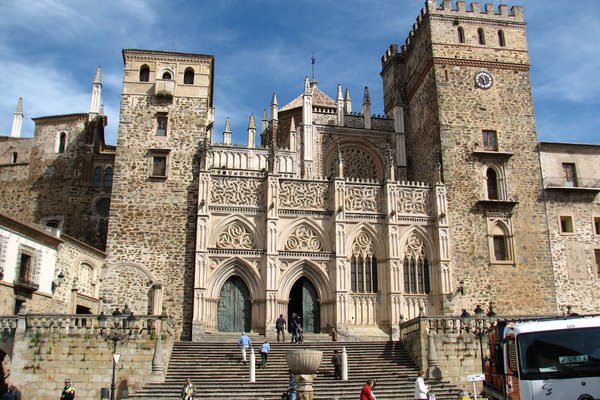Spain
Santa Maria de Guadalupe
The Royal Monastery of Santa Maria de Guadalupe has played a leading role in the history of medieval and modern Spain and continues to be a site of pilgrimage.
It has especially high symbolic value, linked to both the Conquest of Granada and the discovery and subsequent evangelization of the New World. The monastery had its origins in the late 13th century when a shepherd discovered a statue of the Madonna on the bank of the Guadalupe River. On the site of this discovery, first, a chapel was built and in 1389 this monastery. Its architecture shows a variety of differing architectural styles, such as Mudéjar, Gothic and Baroque.
Community Perspective: It’s a massive construction right in the middle of a tiny town. The place seems to be perpetually crowded with large, mostly Spanish, tour groups. Clyde quite enjoyed it and found the Mudejar Cloister of Miracles its highlight, while Hubert has summarized seven points as to why he disliked his visit.
Site Info
Official Information
- Full Name
- Royal Monastery of Santa Maria de Guadalupe (ID: 665)
- Country
- Spain
- Status
-
Inscribed 1993
Site history
History of Santa Maria de Guadalupe
- 1993: Inscribed
- Inscribed
- Type
- Cultural
- Criteria
- iv
- vi
Links
- UNESCO
- whc.unesco.org
- Official
-
- monasterioguadalupe.com — Monasterio Guadelupe
- Related
-
- en.wikipedia.org — Wiki on Black Madonna
- turismoextremadura.com — About the monastery
All Links
UNESCO.org
- whc.unesco.org — whc.unesco.org/
Official Website
- monasterioguadalupe.com — Monasterio Guadelupe
Related Resources
- en.wikipedia.org — Wiki on Black Madonna
- turismoextremadura.com — About the monastery
Community Information
- Community Category
- Religious structure: Christian
Travel Information
Guided Tour Only
Recent Connections
-
Perfect Inscriptions
1993 -
Strict no-photography policy inside
Photography is allowed in the cloister … -
Guided Tour Only
Visits by 1hr tour with guide onlySee m…
Connections of Santa Maria de Guadalupe
- Individual People
-
-
Christopher Columbus
It was here in Extremadura where Christopher Columbus made his first pilgrimage after discovering America in 1492 and where he first thanked heaven for his discovery. (wiki)
-
- Architecture
-
-
Plateresque
"there is an impressive portal of 1520-24 in Plateresque style" (unesco website) -
Mudejar style
"an exceptional example of an ensemble comprised of widely differing architectural styles, including in particular the 14th- to 15th-century Mudéjar church and cloister" (OUV statement)
-
- World Heritage Process
-
-
Perfect Inscriptions
1993
-
- Religion and Belief
-
-
Hieronymites
From 1389 the principle house of the Hieronymites -
Christian Pilgrimage Sites
-
- WHS on Other Lists
-
-
Most beautiful villages
Guadalupe is among "los pueblos más bonitos de España"
-
- Timeline
-
-
Built in the 14th century
Main church and Mudejar cloister
-
- WHS Hotspots
- Science and Technology
-
-
Libraries
scriptorum
-
- Visiting conditions
-
-
Guided Tour Only
Visits by 1hr tour with guide only -
Strict no-photography policy inside
Photography is allowed in the cloister garden but not in the several museums (embroidery, manuscripts and art). It is also not allowed in the sacristy where the Zurbarán paintings are on display.
-
News
No news.
Recent Visitors
Visitors of Santa Maria de Guadalupe
- Adam Hancock
- Adolfo
- Alberto Rodriguez Gutierrez
- aleserre
- Alexander Barabanov
- Alexander Lehmann
- Ammon Watkins
- Antonio J.
- Argo
- Atila Ege
- AustralLights
- BaziFettehenne
- Bin
- Bruno_Pires
- Caspar
- Catoplayer
- Christravelblog
- Claire Bradshaw
- Clyde
- Corinne Vail
- Csaba Nováczky
- Dan Pettigrew
- David Berlanda
- debatecoach
- Dimitrios Polychronopoulos
- Dorejd
- Els Slots
- Eva Kisgyorgy
- Evgenii
- Fan Yibo
- Femke Roos
- Frederik Dawson
- Gary Arndt
- GeorgeIng61
- HaraldOest
- Harald T.
- Harry Mitsidis
- Hubert
- Iain Jackson
- Ivan Rucek
- Jakob F.
- Jarek Pokrzywnicki
- Jasam
- Javier
- Javier Coro
- Jean Lecaillon
- Jeanne OGrady
- Jezza
- JobStopar
- Joel on the Road
- Jonas Kremer
- Jonas Martinsson
- Klaus Freisinger
- Lara Adler
- Little Lauren Travels
- Loic Pedras
- Luis Filipe Gaspar
- lynnz317@aol.com
- Maciej Gil
- Martina Rúčková
- MH
- M. Huineman
- Michael Novins
- Mikan22
- Mikko
- MMM
- nan
- napalm
- Nihal Ege
- PabloNorte
- Patrik
- Paul Schofield
- Philipp Leu
- Philipp Peterer
- Pink Bunny
- Porcho
- Pradip Tripathy
- Randi Thomsen
- Rick Ohm
- Roger Ourset
- Roman Bruehwiler
- Samy G
- scubarrie
- Shandos Cleaver
- sibariam
- Solivagant
- Stanislaw Warwas
- Svein Elias
- Szucs Tamas
- Tamara Ratz
- Taotao Chen
- Tarquinio_Superbo
- Tevity
- Thomas Buechler
- Thomas van der Walt
- Tim Allen
- tony0001
- Truls Brekke
- ValiaVeweth
- Vanessa Buechler
- Viaje al Patrimonio
- Wieland
- Wojciech Fedoruk
- Xiong Wei
- Xiquinho Silva
- Zoë Sheng
Community Reviews
Show full reviews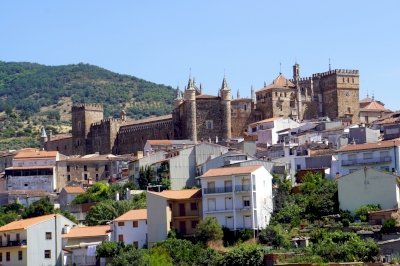
Given the rather remote location of Guadalupe, one might expect that only a few people visit the monastery. But quite the contrary, it is extremely popular. The monastery is associated with two significant historic events: the Reconquista and the Spanish conquest of the Americas. The Catholic monarchs Isabella of Castile and Ferdinand of Aragon received Christopher Columbus here several times before he set out on his journey. Later, it became a tradition that conquistadors prayed to Our Lady of Guadelupe for support for their raids. And thus, the Black Madonna became the symbol of the Christianisation of Latin America and is a popular pilgrimage destination for Spaniards and all Christians from Spanish-speaking countries until today.
Without a doubt, the Royal Monastery of Guadalupe is on the World Heritage List mainly for its historical significance rather than its architecture. Having said that, the fortress-like façade is impressive and the cloister is a fine example of the Moorish influences on the Gothic style.But it was not the architecture that I remember most about Guadalupe. It was rather the fact that almost all the points that could annoy me on such a visit occurred here.
Annoying point 1: a boring drive to the siteGuadalupe is in the middle of nowhere in the east of Extremadura, a one and a half hour drive from Mérida. Usually not a problem but the route runs through a particularly boring landscape. Parking was no problem, I had arrived early enough.
Annoying point 2: …
Keep reading 0 comments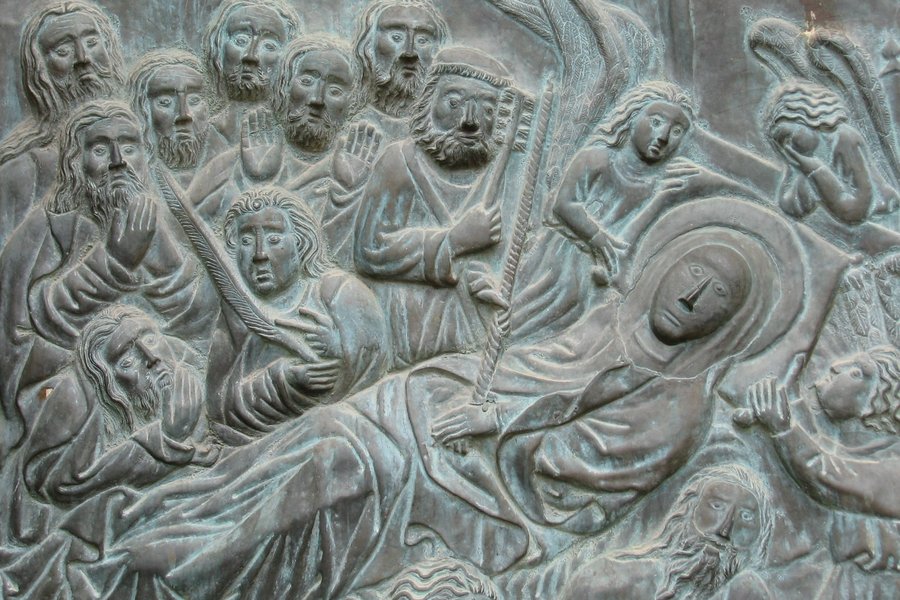
As of February 2016 guided visit is 5 euro per person.
The tour starts from very beautiful collection of tapestry and various bishops' clothes. Then there is a room with huge religious books (mainly 16th century); another room with small art collection (wood carvings and paintings). Tour proceeds to impressive sacrestia (described by the guide as "regna" of Spanish sacrestias).
The final part of the tour is lead by a monk, who starts from inspirational speech (as I partly was able to understand it) and then finally rotates a special niche and you could kiss some relic from monk's hands and glance closely at the statue of Madonna.
In overall, we liked the monastery, which seem to be very popular amount local Spanich pilgrims even out of tourist season.
Keep reading 0 comments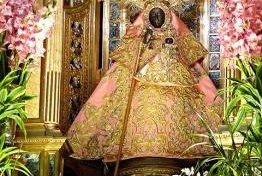
I visited this WHS in June 2015. Last year, returning from my Portugal road trip and passing through Extramadura I had decided that this WHS was too much of a detour eastwards as it is a good 1.5-2hrs away from Merida or Caceres. This time round, I decided to sleep in a motel in Navalcarnero, just outside Madrid, to head for a 2hr 15mins drive early the next morning. I knew that the first tours of the Guadalupe Monastery would be around 10am as the ticket office opens at 09.30. Judging by the Spanish standards of punctuality plus the fact that before a group of at least 10 people is formed, the guide does not start the tour, the first tour will always be after 10am. Yet I woke up early and I arrived in Santa Maria de Guadalupe just after 08:30. The cathedral and monastery are bang in the middle of the town and just behind the monastery is a small free parking lot. There were no cars parked at that hour apart from the few locals who park their vehicle there overnight. The cathedral was open so after admiring the facade I decided to go in to see the interior. At the door there was a sign indicating that mass was going to be celebrated at 08:45 and truly enough the first elderly people started to come in for mass. Being there so early and seeing the intimate nature of the mass celebrated here in honor of the …
Keep reading 0 comments
The Iberian peninsula is full of historic monasteries, with a large number of them inscribed on the WH list, and the one in the small village of Guadalupe in Extremadura is probably the most famous of them. It is quite a big and impressive building, a mixture of Gothic and Baroque styles, featuring many important relics and works of religious art, the most famous of them being the Black Madonna (anyone who has already been to Montserrat or Czestochowa is familiar with this). I can't say I was blown away by what I saw, but granted, the place seems to be perpetually crowded with large, mostly Spanish, tour groups, you can only visit as part of a group, and it is hard to actually see much on your own because of this. The cloister was very nice, though, and there are some interesting historic facts about the monastery, as it was the most important one in Span for many centuries and always under the personal protection of the reigning monarch - e.g. after his return from his first voyage, Columbus made a pilgrimage there, and the Madonna of Guadalupe is much revered in the New World, especially in the famous basilica in Mexico. So, an interesting visit if you don't mind crowds, but because of the very remote location only recommended for those with a strong interest in history and/or religious art.
Keep reading 0 comments
Despite its remote location Guadalupe is regularly though infrequently connected by a bus service to Caceres. I recall the journey being slightly scary as the bus swerved around bends across a mountain pass.
On the day of my visit I was charged a minimal 3 Euros for a guided tour at 5pm.
Keep reading 0 comments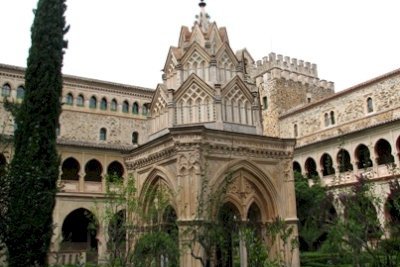
The little town of Guadalupe isn't close to any of the bigger cities in the area (Mérida, Caceres, Toledo - all 3 WHS by themselves). I drove to Guadalupe from Mérida. This takes about 1.5 hours. A rather boring drive, the most memorable was crossing Miajadas: a town that labels itself as the European Tomato Capital. All the money they earn from the tomatoes probably goes into buying new road signs, because the city's streets are littered with them. 40kmh-20kmh-bump in the road-40kmh-20kmh-another bump (and that x10).
The monastery of Guadelupe is right at the heart of Guadelupe town. It's a massive building, way too big and impressive for the tiny town square where it's located. As about anywhere I visited on this trip I wasn't the only tourist here: a bus unloaded its aging Spanish passengers just at the front of the monastery.
For only 4 Euros you can join a guided tour inside the monastery. This isn't a contemplative experience - it's never fun being hoarded through a site with a group of about 50 others and here it also is a rushed affair. The most interesting parts for me were the Sacristy and the Reliquaries Chapel. Both have great frescoes adorning their walls and ceilings. Piece de resistance of course is the little Black Madonna. This is left to the end of the tour and is introduced by one of the (Franciscan) monks. An element at the back of the sanctuary can be turned 180 …
Keep reading 0 comments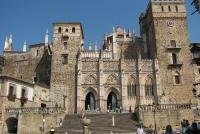
In our travel around Spain we have been to the nice vernacular village of Guadalupe, where the beautiful Our Lady’s royal monastery stands. It was built from the 14th to the 17th century and is an original mixture of more different styles and above all a strongly symbolic Spanish monument, as it is associated with the Reconquest of the Iberian peninsula by the Catholic Kings Fernand and Isabel and the discover of the Americas by Christopher Columbus, which both happened in 1492. It is also one of the most important pilgrimage places in the world and one of the most sacred places for Spanish-speaking Catholics, above all for those living in all Latin America. In fact the cult of the Virgin statue, found in Guadalupe in the 13th century, was exported in America by Spanish Conquistadores, mainly born in the Extremadura region, in which the monastery is situated; here the first American people were baptised.
As it is situated in the middle of nowhere, the travel to go there strongly proved our patience. From Cáceres it is 130 km on a never ending winding (but panoramic) road with some passes, and the same to go away from Guadalupe towards Toledo (180 km). To enter the monastery, the opening time is from 9.30 to 13 and from 15.30 to 19. You can find information about it on the web pages http://www.puebladeguadalupe.net/5monasterio/index.htm. We arrived quite early - but not so much, at 10.30 - and there was a problem: the visits are …
Keep reading 0 comments
